And now we enter the time of year when we walk side-by-side with our fears. It’s not so much that the shortening days and pumpkins and ghosts are spooky, but that this time of year actively invites us to confront what frightens us: spiritually, psychologically, physically. If we can have a bowl of candy by our sides to help us emotionally cope with our inner ghouls, all the better.
Over the last decade, I’ve cultivated an obsession with the horror genre. I’m never opposed to seeing a campy movie (à la Sleepaway Camp). The over-acting, the fake blood, the basements — it’s a great escape from the ordinary poltergeists of our everyday lives. But in the last few years, I’ve finally developed a taste for what horror elements speak to me on an intellectual level. And now that I know them, much of the horror catalog feels, well, cheap.
Yesterday, I sat down in my favorite cozy chair, tea in hand, and wrote down what makes a good ghost story. I was surprised by how the more I broke it down, the more I found myself just describing a good story. Ding ding ding! What a takeaway! The best scary stories are, at the heart, just great stories.
Anyway, I wanted to share my list with you in hopes that you’ll also share what makes a good ghost story to you. Consider this our little Substack campfire. Gather around; no curses allowed. Only S’mores and those sugar cookies with the orange frosting. Okay?
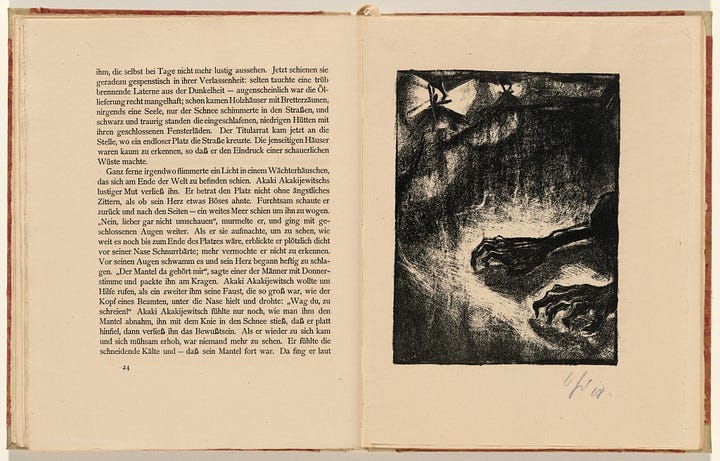
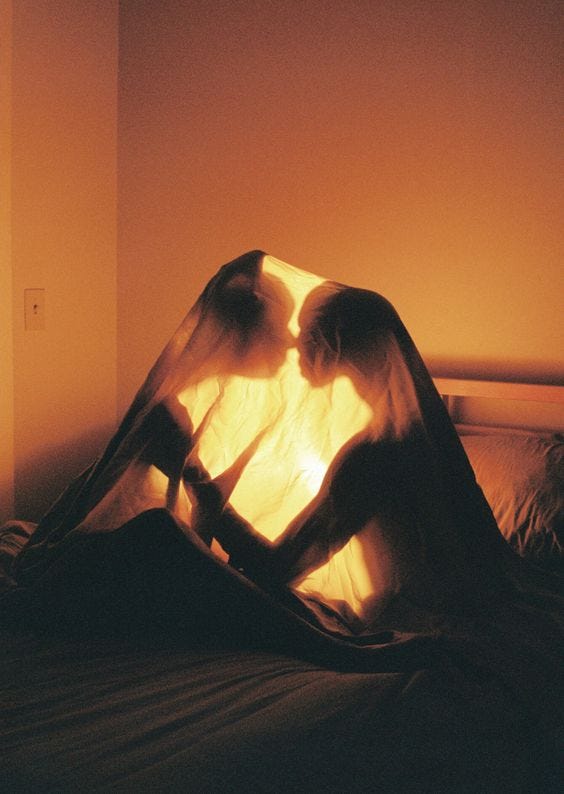
1. Subversion of the horror genre
A good horror film rejects its own genre. For example, old scary movies often kill women for being sexually active (see: Halloween, Scream), while the virgins make it out alive. Terrorized but, yes, still breathing. Online essays about female victimization posit that this on-screen portrayal mirrors how patriarchal societies punish women for being sluts while simultaneously yelling, “Take your top off!”
Arguably, we haven’t come far from this troubling and stale pattern, but we’re starting to see movies that blatantly satirize or flip this dynamic. Promising Young Women, for example, is a twist on the rape-revenge genre that has a disturbing grip on our culture. And basically all of Carmen Maria Machado’s stories (but most notably her short story, “Especially Heinous: 272 Views of Law & Order: SVU”) confront the violent discourse surrounding women’s bodies.
2. The haunting is psychological first, supernatural second
This is critical. There are certainly B+/A- horror films (Alien comes to mind) that forgo interiority. But I will stand on my grave and argue that the pinnacle of the genre, the very best of the best, the creme de la creme, are the stories that are psychological first and supernatural second.
The difference is that psychological horror bridges the viewer’s experience and the character’s experience. If a woman is being haunted, that’s creepy. If a woman is being haunted by her mother because they never got along, that’s horrifying and (potentially) relatable. What relationship will come back to haunt you, the viewer?
Shirley Jackson is the queen of this particular magic trick, and I encourage you to seek out The Haunting of Hill House (of course), her short stories, and Hangsaman. I guarantee you will have higher standards for horror a mere 20 pages in.
3. The language itself is haunted
When I’m reading spooky things, the language itself needs to be unsettled and off-kilter. Verbs get deployed in unusual ways, and the world is just a little bit askew, slightly unrecognizable. (It’s basically the literary equivalent of tilting the camera to one side.) Once again, The Haunting of Hill House has this in spades, as does anything by my beloved Samanta Schweblin.
Two examples:
"No live organism can continue for long to exist under conditions of absolute reality; even larks and katydids are supposed, by some, to dream." - Shirley Jackson, The Haunting of Hill House.
“Strange can be quite normal. Strange can just be the phrase 'That is not important' as an answer for everything. But if your son never answered you that way before, then the fourth time you ask him why he's not eating, or if he's cold, or you send him to bed, and he answers, almost biting off the words as if he were still learning to talk, 'That is not important', I swear to you Amanda, your legs start to tremble.” - Samanta Schweblin, Fever Dream
4. Horror happens in the “dissolution of boundaries” between the living and the dead
In Laura Miller’s introduction to The Haunting of Hill House, she observes that horror occurs in the “dissolution of boundaries” between the living and the dead. Fear occurs when the character and the ghost suddenly have equal footing on this earthly plane. The Blair Witch Project is perhaps the quintessential example of this suspension of boundaries. At first, the story of the witch in the woods is just that: a story. But as our young documentarians disappear deeper into the woods, they enter the witch's domain. It no longer feels important that they’re alive and she’s dead; they exist in the same liminal space, and damn, it’s frightening.
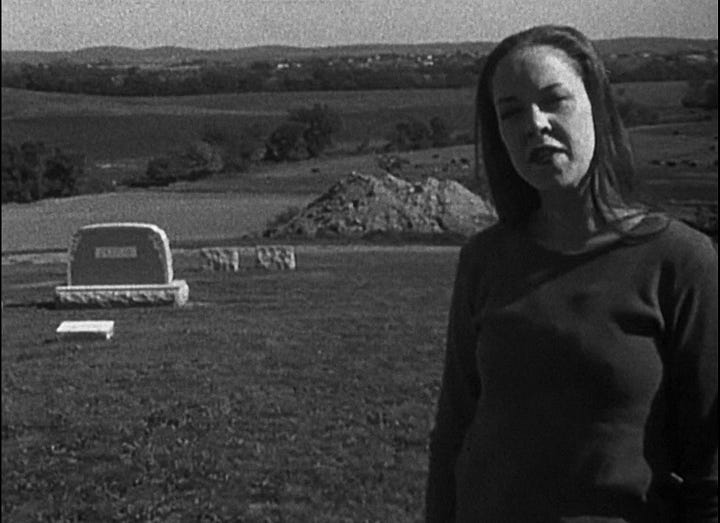
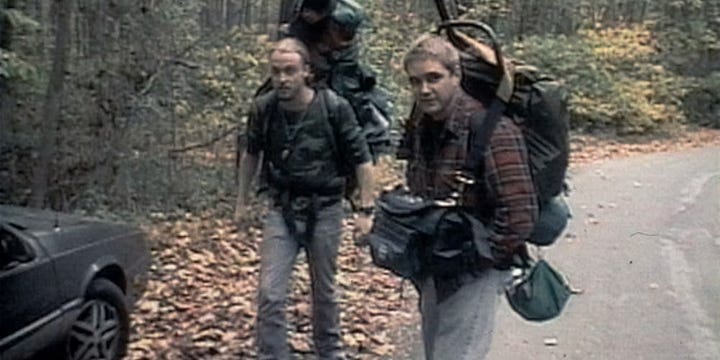
5. You should ask yourself: “Who is being haunted, and who is doing the haunting?”
This is my favorite element because it’s the hardest to pull off. In a good ghost story, there should be a point in which you ask yourself: Who is the ghost, and who is the one being haunted? The answer is almost always that we’re haunting our own lives just as much as we’re being haunted by the things that go bump in the night.
Blair Witch contains elements of this, as does Hill House (at this point, duh). Nope by Jordan Peele also comes to mind. Even though it’s not a ghost story, Peele seems to be pointing out that an alien feasting on people is similar to how humans feast on spectacle, always searching for the next hyper-entertaining thing. We’re the ones doing the haunting and (in this case, hunting).
Other favorite horror movies: Get Out, The Silence of the Lamb, The Shining, Barbarian, The Conjuring, Evil Dead 3 (for the lols), Annihilation
Tell me: What makes a good ghost story, in your opinion? What elements and tropes speak to your spooky soul? And which ones make you angry?
I’ve been skipping writing reports lately because it’s been business as usual over here: writing, doubting myself, querying, doubting myself — rinse, wash, repeat. But something interesting happened that I did want to share.
Thirty-five thousand words into a new manuscript, I realized that I’d added a lot of “padding” or “fluff” that was protecting me from the story I actually needed to write. It’s difficult to learn this lesson so deep into something new, but I also wouldn’t change it. It’s interesting to watch myself circle this thing I want to write about. At first, that circle was big, but the more I wrote, the more that circle shrunk.
I think I’ve found the right way to tell it now, but who knows? I’ll keep you updated. ; )
Thank you, as always, for reading Life Lives!
If you haven’t already downloaded the Substack app, I highly recommend it.
The app is how you’ll access the full value and experience of your subscription to Life Lives.







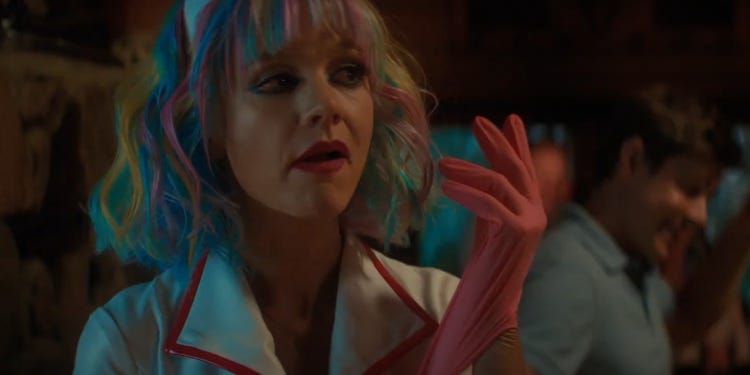


As always a wonderful read. Thank you.